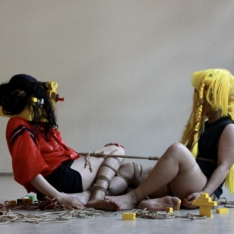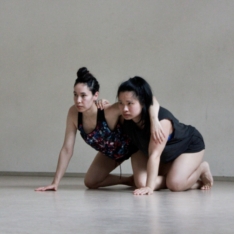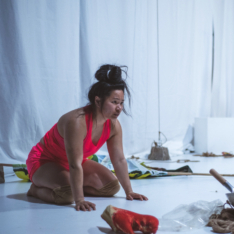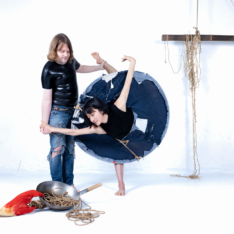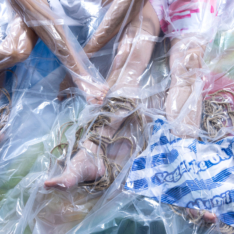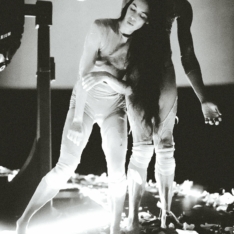
Soon travelling to Finland for Juli Reinartz resaerch/doctoral thesis. We will spend two weeks at the Saari-Residence in rural nature. A journey by land with a multi-divers team and my little one joining as well. Last week we shortly touched on the topic in her studio in Berlin where the final presentation takes place at the end of June.
I much enjoy the reflective-somatic space Juli creates on ‘Temporality and Bodies’:
LATE is a long ball.
A baroque opulence with contemporary bodies.
A collective dance on crip time.
An excess of the time that we have.
An experiment on collectivity.
How can we share time if we cannot share time?
A group of performers returns to the beginnings of dance notation, gets in formation and assesses anew the cultural past that has defined the power space around them. They put in question the possibility of synchronicity and organize the space along their temporal scope. By way of that, they create a space of simultaneities. They engage with the past in order to create a future for themselves.

Research direction and choreography: Juli Reinartz
In collaboration with the performers Addas Ahmad, Ariane, Hassan Pour-Razavi, Dasniya Sommer and Matilda Carlid
Research participation: Daria Dönch, Jojo Büttler, Massiamy Diaby
Audio description: Silja Korn in collaboration with the performers
Outside eye: Gerko Egert
Music: Iftah Gabbai
Production assistance: Merle Wurl
Technical direction: Fabian Bleisch
Funded by Kulturamt Pankow and Theater Academy, Uniarts Helsinki. With generous support of Saari Residence, funded by Kone Foundation. Supported by residency program at PACT Zollverein (Essen), funded by the Ministry for Culture and Science of the State of North Rhine-Westfalia. Research funded by the performing arts Fund with funds from the Federal Government Commisioner for Culture and the Media as part of NEUSTART KULTUR. With generous support of Theater Thikwa.
22 and 23 June 2024
Entrance between 7 and 9pm
Storkower Strasse 115
10407 Berlin
For tickets, further information on the performance and accessibility: www.late-night.net
Contact: latebirdnight@gmail.com
German invitation here
Photo: Iftah Gabbai
Review: The Centre is Everywhere – The Circumference is Nowhere by Alice Heyward


